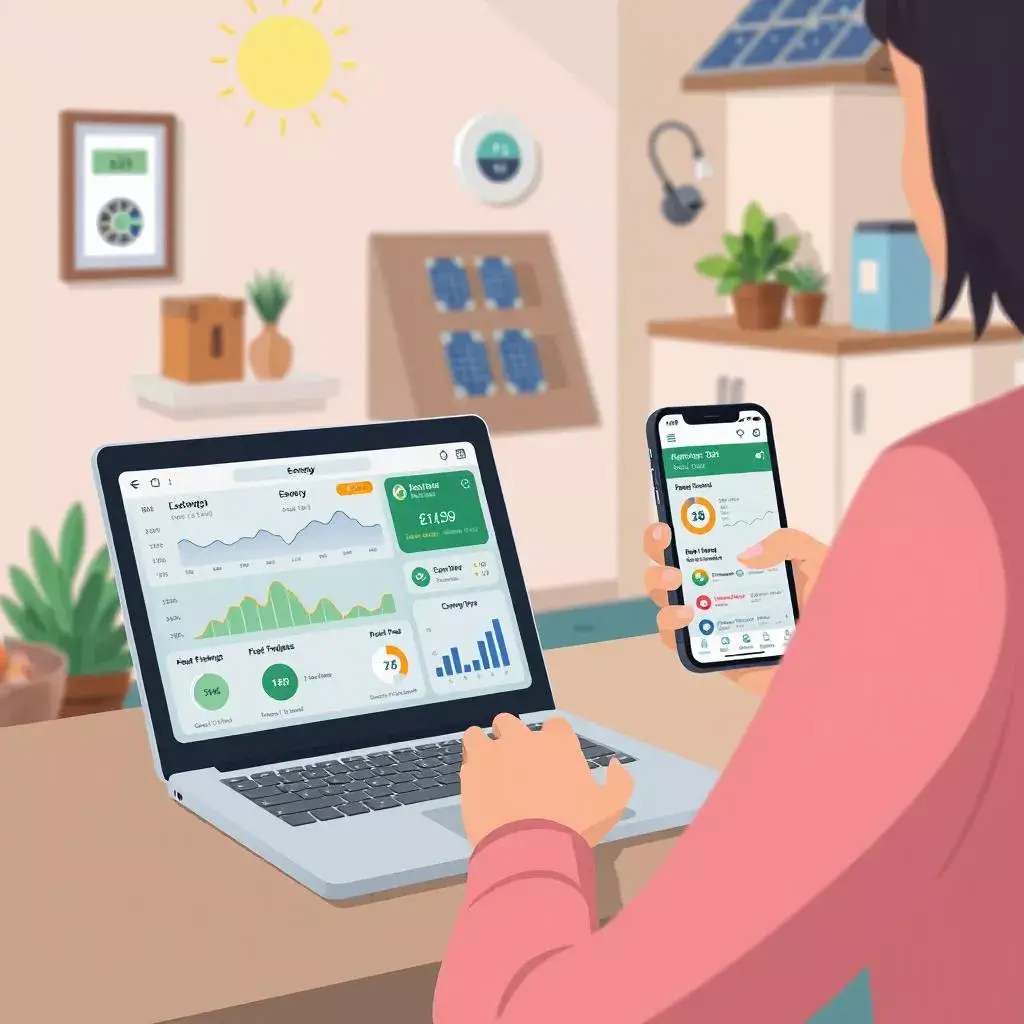1. Introduction
- Monitoring energy consumption is essential for reducing electricity bills and lowering environmental impact. With the rise of digital tools, tracking and optimizing energy use has never been easier. Online energy monitoring solutions provide real-time insights, helping users make informed decisions to conserve energy and reduce waste.
- This article explores various simple online tools to monitor energy consumption effectively and how they contribute to a more energy-efficient lifestyle.
2. Importance of Energy Monitoring
Cost Savings: Helps identify high energy-consuming appliances and reduce utility bills.
Environmental Benefits: Reduces carbon footprint by lowering energy waste.
Real-Time Insights: Online tools provide instant data on electricity consumption.
Improved Energy Efficiency: Encourages better habits for sustainable energy use.
Automation Integration: Works with smart home systems for automatic adjustments.
3. Online Energy Monitoring Platforms
Google Nest Energy Dashboard: Monitors energy use from smart thermostats and connected devices.
Sense Energy Monitor: Tracks individual appliances using real-time data analysis.
Emporia Vue: Provides in-depth analytics on household electricity consumption.
Enphase Enlighten: Ideal for tracking solar panel performance and energy usage.
MyHydro BC: Offers insights into daily, weekly, and monthly energy patterns.
4. How Smart Meters Help Monitor Usage
Real-Time Tracking: Provides instant feedback on energy consumption.
Detailed Reports: Offers hourly, daily, and monthly energy usage statistics.
Remote Access: Allows users to monitor energy use via mobile apps.
Peak Usage Alerts: Notifies homeowners of excessive energy consumption.
Integration with Utility Companies: Syncs with power providers for accurate billing and usage details.
5. Mobile Apps for Energy Tracking
JouleBug: Encourages sustainable energy habits through gamification.
EnergyHub: Controls and optimizes connected smart home devices.
Kill-A-Watt Companion: Analyzes appliance energy consumption.
Green Outlet: Estimates carbon footprint based on electricity usage.
OhmConnect: Rewards users for reducing electricity consumption during peak hours.
6. Benefits of Smart Plugs and Power Strips
Remote Monitoring: Allows users to check energy usage via apps.
Scheduled Automation: Turns off devices automatically to save power.
Phantom Energy Reduction: Eliminates standby power consumption.
Usage Insights: Provides data on individual appliance energy use.
Voice Control Compatibility: Works with Alexa, Google Assistant, and Siri.
7. Using Home Energy Management Systems (HEMS)
Comprehensive Data Analysis: Tracks energy use across all household devices.
User-Friendly Dashboards: Displays insights in an easy-to-read format.
AI-Powered Recommendations: Suggests ways to optimize energy use.
Custom Alerts: Sends notifications about unusual consumption patterns.
Integration with Smart Home Devices: Works with thermostats, lights, and appliances.
8. Comparing Online Energy Monitoring Tools
| Tool | Features | Best For |
| Google Nest | Smart thermostat monitoring | Homeowners with smart homes |
| Sense Energy Monitor | Appliance-level tracking | Large households |
| Emporia Vue | Real-time analytics on energy use | Tech-savvy users |
| Enphase Enlighten | Solar energy tracking | Solar panel users |
| OhmConnect | Rewards-based energy savings | Eco-conscious consumers |
9. Setting Up an Online Energy Monitoring System
Choose the Right Tool: Select an app or smart device that fits your needs.
Install Smart Meters or Sensors: Ensure compatibility with your home setup.
Connect to Wi-Fi: Enable real-time data tracking and remote access.
Sync with Utility Provider: Get accurate billing and consumption reports.
Monitor and Adjust: Use insights to reduce unnecessary energy use.
10. Reducing Energy Waste with Online Tools
Identify Energy Hogs: Detect and replace inefficient appliances.
Use Timers and Schedules: Automate power usage for optimal efficiency.
Adjust Thermostat Settings: Lower heating and cooling costs with automation.
Switch to LED Bulbs: Reduce lighting energy consumption.
Monitor Trends: Adjust habits based on monthly energy reports.
11. Challenges of Online Energy Monitoring
Initial Cost: Some tools require investment in hardware or subscriptions.
Data Accuracy Issues: Sensors may not always provide precise readings.
Privacy Concerns: Sharing energy data with third-party apps.
Device Compatibility: Some tools may not work with older home systems.
Learning Curve: Understanding data reports may take time.
12. Future of Energy Monitoring Technology
AI-Powered Analytics: Enhanced automation for optimizing energy use.
Blockchain Integration: Secure and transparent energy tracking.
Smart Grid Advancements: Improved efficiency in electricity distribution.
Greater IoT Connectivity: Seamless integration with more smart devices.
Eco-Incentives: More programs rewarding users for energy conservation.
13. Energy Savings Potential: A Cost Analysis
| Energy-Saving Method | Estimated Savings (%) | Recommended Tools |
| Smart Thermostats | 10-20% | Google Nest, Ecobee |
| LED Lighting | 80% | Philips Hue, LIFX |
| Smart Plugs | 5-10% | TP-Link Kasa, Wemo |
| Home Energy Monitors | 10-30% | Sense, Emporia Vue |
| Appliance Upgrades | 20-50% | Energy Star Devices |
14. Conclusion
Online energy monitoring tools provide an effective way to track, analyze, and reduce energy consumption. By integrating smart meters, energy apps, and automation, individuals can make informed decisions to lower their carbon footprint and electricity bills.
As technology continues to advance, the future of energy monitoring promises even greater efficiency and sustainability. Investing in these tools today leads to long-term savings and a more eco-friendly lifestyle.
Disclaimers
Energy savings vary based on individual usage patterns and home efficiency.
Some monitoring tools require a subscription or additional hardware.
Online energy tracking may have occasional data inaccuracies.
Privacy policies of third-party apps should be reviewed before usage.
Information provided is based on general consumer trends and may change over time.
Author: Dipika Kumari
Publication Date: 27-03-2025
Email: [email protected]
